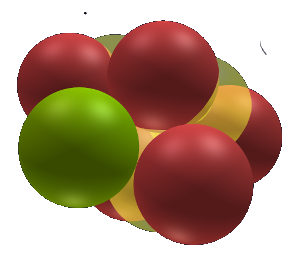Cobalt 57
Cobalt, Iron and Nickel are very close to each other and seem to have different configurations of nuclets with a general Valance value of +2 / +3.
Cobalt structure remains somewhat elusive. The structure shown here has 56 protons, while in reality there is only the stable isotope that has 59 protons. It is suspected that this has to do with the creation of cobalt through the decay of Ni59. That would be the configuration that could create a carbon nuclet at the place of the Boron nuclet. However it seems the structure does not like this and it decays into the Co configuration with the extra supporting neutrons.
more research needed in the isotopic decay processes.
| Element | |
| Valence | 5, 4, *3, *2, 1, 0, -1 |
| Stability |
|
| Isotope | |
| Abundance |
0.00 %
|
| Half Life |
271.74 d
|
| Decay | |
| Protons |
57
|
| Inner Electrons |
30
|
| Outer Electrons |
27
|
| Nuclear Spin |
7/2−
|
| Mass Actual | |
| Mass H Norm |
0.0000 AMU
|
| Mass Calc |
57.4460 AMU
|
| BE Nucleon |
8741.88 KeV
|
| BE Actual |
498.29 MeV
|
| SAM Lines |
223.00
|
| BE SAM Lines |
496.18 MeV
|
| BE Difference |
99.58%
|
| AN-ISOTOPE |
27: 57
|
| Nid | 313 |
state: final
protons:
P0:
P1:
P2:
P3:
P4:
P5:
P6:
P7:
P8:
P9:
P10:
P11:
nuclets:
N00:
state: initial
attachAngle: 3
protons:
P0:
P1:
P2:
P3:
P4:
P5:
P6:
P7:
P8:
P9:
P11:
P12:
P13:
P14:
P15:
P16:
P17:
P18:
P19:
N01:
state: final
attachAngle: 3
protons:
P0:
P1:
P2:
P3:
P4:
P5:
P6:
P7:
P8:
P9:
P11:
P16:
P17:
P18:
P19:
neutrons: [U10]
nuclets:
N010:
state: boron11
attachAngle: 5
protons:
P0:
P1:
P2:
P3:
P4:
P5:
P6:
P7:
P9:
P11:
